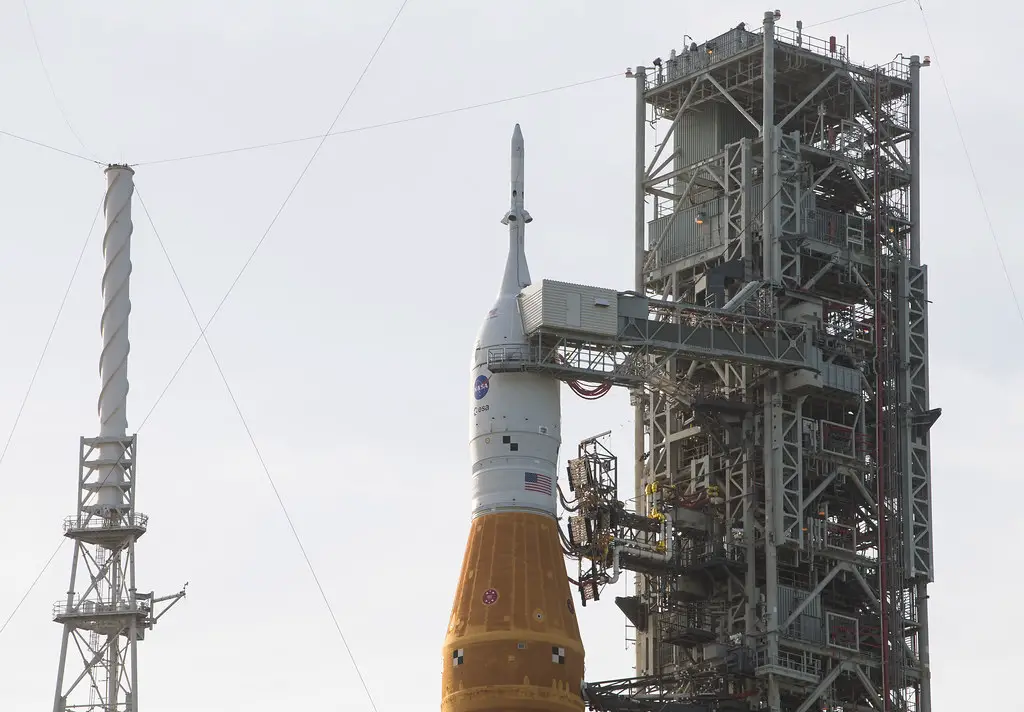Artemis 1: At 1,420 miles per hour, the four core stage engines have returned to maximum thrust for the next big maneuver. The solid rocket boosters will separate and jettison approximately two minutes and eleven seconds into the mission, or roughly 30 seconds from now. In Mission Control Houston as teams continue to monitor the flight of Artemis 1. We’re now 16 miles downrange from the launch pad at Kennedy Space Center, traveling over 2,800 miles per hour. We’re on standby for solid rocket booster jettison and will shortly receive confirmation that the 177-foot boosters have separated. Artemis generation at 6:44 Central Time Just 9 minutes and 30 seconds ago, commands were sent for the outbound powered flyby burn to occur with the orbital maneuvering system engine or OHMs engine onboard Orion.
This sends Orion close enough to the lunar surface to leverage the moon’s gravitational force and swing the spacecraft once around the Moon toward entry into distant retrograde orbit. Following this, Orion will remain in the distant retrograde orbit for one half elliptical orbit around the Moon, which will last for a total of Orion is 1,277 miles above the lunar surface after its return powered flyby burn, which sent it around the moon’s backside. Orion now has its eyes set on returning home, as seen from one of its solar arrays. 50 years ago today, Apollo 17 Commander Gene Cernan and lunar module pilot Jack Schmidt piloted Challenger to a Pinpoint Landing on the Moon.
NASA’s newest moon Explorer the Orion spacecraft is on its way home after circumnavigating the moon and Beyond in an elliptical distant retrograde orbit now less than two hours from splashing down in the Pacific Ocean West of Baja California to complete its Shakedown mission that has opened a new era of deep space exploration. A live view of the Orion spacecraft closing in on the planet Earth, which is now approximately 11,000 miles away and continuing a very precise trajectory for a scheduled Splashdown at 11:39:42 a.m. central time this morning. Crew module service module separation will occur in just one minute. I’ll be standing by for confirmation of that from 10 seconds until set. We have confirmation of separation Orion is flying on its own again.
Separation occurred exactly on time at 11 a.m. and 11 seconds Central Time with Orion 3,200 statute miles away from Earth. The European service module has completed its mission. We’re just one minute away from entry interface. Orion is no longer in a blackout period. Good view from the cabin camera looking out the upper hatch of Orion; we should be doing the skip entry maneuver in a moment. Flight Dynamics says that Orion is precisely on target; we should be performing the maneuver in a moment. Communications established with Orion; view from the deck of the USS Portland; view from the cabin camera of Orion as it continues a series of role reversals; flight dynamics information received from the spacecraft.
Orion straight and narrow on a true track toward its Splashdown site forward Bay covered jettisoning in less than three and a half minutes 150 thousand feet above the ocean Orion is currently speeding at Mach 10. Now at 50,000 feet in front of Orion, large covered jettisoning pyros are armed. 25 000 feet, trogs have been deployed; the recovery crew in the Pacific has reported two good drug shots; the reasonable rate is accurate. Orion’s velocity is currently 282 miles per hour range to splash down 1.5 miles 10,000 feet reefing in progress three good main shoots for Orion three fully inflated main shoots time to splash down 90 seconds perfect descent rate reported and there it is far above the Pacific. America’s new Ticket to Ride to the Moon and Beyond is now in view. The most recent chapter of NASA’s Journey to the Moon concludes. Orion has returned to Earth and is in excellent condition and alignment as predicted.
![]()
